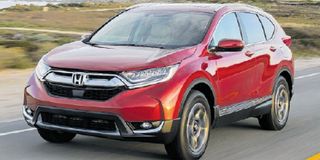The simplest security of two batteries

There are probably several thousand vehicles that are fitted with two batteries. Most of them will be big 4WDs which are used for expedition-style safaris or as mobile workshops; vehicles which travel to very remote places and/or run lots of extra electrical equipment while they are standing still.
There are several different ways to “wire up” the extra battery resource.
One is to connect the two batteries together in a way that makes them work like a single battery, but with twice the storage capacity. This means the battery “pack” can provide power for much longer without recharging to prevent it going flat.
A second is to wire up one battery to run the starter motor only and the other battery to run all other electrical systems.
This means that even if the auxiliary system battery is used so heavily that it goes flat, the other battery will still start the engine and hence kick the recharging system into action.A third option is for each of the batteries to be wired in as if it were the only one, connected to all the vehicle’s electrical systems in the normal way.
The second battery is effectively a duplicate or spare and by use of a heavy-duty switch the driver simply decides which one he wishes to use at any particular time.
All of these systems give the vehicle increased battery resource and provide back-up power in the event of one battery failing (which is one of the reasons why two standard batteries are a better solution than one giant battery).
Flexible arrangement
It is a very flexible arrangement, and is probably the best way to give a vehicle belt-and-braces security of electrical supply.
Technically, all the wiring options are simple and sure. Apart from the cost of an extra battery and a little more cabling, the only problem is to find a space to put the extra battery and build it a strong mounting (tray and clamp).
In a big 4WD vehicle there is usually plenty of convenient space under the bonnet; in smaller vehicles there might not be room in the engine compartment, and wiring a battery into the boot is quite possible but cumbersome. Although two-battery systems give extra power storage and emergency spare flexibility, their over-riding purpose is to ensure the vehicle always has enough electrical power to start its engine.
As most ordinary motorists well-know, once the engine is running, the alternator usually generates more than enough electricity to recharge a flat battery and run all the vehicle’s electrical systems. Even if your battery goes flat, if you can push start or jump start the vehicle, you are back in business.
But push-starting a town run-about down a road, and push-starting a big 4WD parked in a river or a sand drift, are very different propositions. Hence the special provisions made by heavy duty safari enthusiasts.
You don’t need to be an extreme expeditionary to consider the modification. Even in more moderate circumstances, the double battery set-up offers peace of mind, stronger starting, and reduces stress on both batteries so they are less likely to fail and tend to last longer.
Email: life&[email protected]




